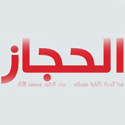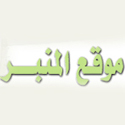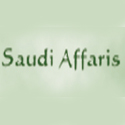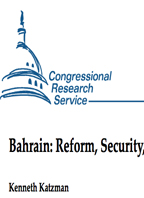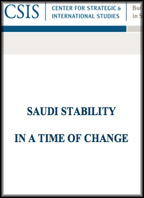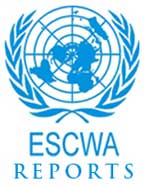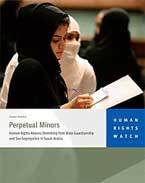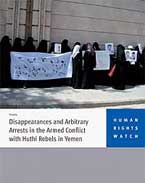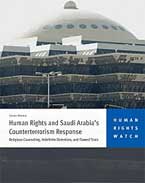Cable dated:2007-12-10T05:54:00C O N F I D E N T I A L SECTION 01 OF 03 RIYADH 002441SIPDISSIPDISDHAHRAN SENDS DEPT OF ENERGY PASS TO MWILLIAMSON, GPERSON, AHEGBURG, AND JHART CIA PASS TO TCOYNEE.O. 12958: DECL: 12/10/2017 TAGS: EPET ENRG ECON SA
¶1. (C) SUMMARY: On November 20, 2007, CG and Econoff met with Dr. Sadad al-Husseini, former Executive Vice President for Exploration and Production at Saudi Aramco. Al-Husseini, who maintains close ties to Aramco executives, believes that the Saudi oil company has oversold its ability to increase production and will be unable to reach the stated goal of 12.5 million b/d of sustainable capacity by 2009. While stating that he does not subscribe to the theory of “peak oil,” the former Aramco board member does believe that a global output plateau will be reached in the next 5 to 10 years and will last some 15 years, until world oil production begins to decline. Additionally, al-Husseini expressed the view that the recent surge in oil prices reflects the underlying reality that global demand has met supply, and is not due to artificial market distortions. END SUMMARY.
——————————————— ——-
SAUDI ARABIA WILL BE UNABLE TO MEET PRODUCTION GOALS ——————————————— ——-
¶2. (C) Dr. Sadad al-Husseini met with CG and EconOff on November 20 to discuss current trends in the international energy market, as well as his thoughts on the Saudi energy sector. Al-Husseini served as Executive Vice President for Exploration and Production from 1992 until his retirement in 2004. He also served as a member of the Aramco Board of Directors from 1996 to retirement. (COMMENT: Al-Husseini retired in the midst of an executive dispute, supposedly caused when he unsuccessfully attempted to engineer his ascension to the position of CEO. Although he continues to live at Aramco’s main camp and has close interpersonal relationships with key Aramco executives, many of al-Husseini’s views on Aramco are shaped by the perception that the company would be better off if he were running it. END COMMENT). It is al-Husseini’s belief that while Aramco can reach 12 million b/d within the next 10 years, it will be unable to meet the goal of 12.5 million b/d by 2009. The former EVP added that sustaining 12 million b/d output will only be possible for a limited period of time, and even then, only with a massive investment program.
¶3. (C) According to al-Husseini, the crux of the issue is twofold. First, it is possible that Saudi reserves are not as bountiful as sometimes described and the timeline for their production not as unrestrained as Aramco executives and energy optimists would like to portray. In a December 1 presentation at an Aramco Drilling Symposium, Abdallah al-Saif, current Aramco Senior Vice President for Exploration and Production, reported that Aramco has 716 billion barrels (bbls) of total reserves, of which 51 percent are recoverable. He then offered the promising forecast - based on historical trends - that in 20 years, Aramco will have over 900 billion barrels of total reserves, and future technology will allow for 70 percent recovery.
¶4. (C) Al-Husseini disagrees with this analysis, as he believes that Aramco’s reserves are overstated by as much as 300 billion bbls of “speculative resources.” He instead focuses on original proven reserves, oil that has already been produced or which is available for exploitation based on current technology. All parties estimate this amount to be approximately 360 billion bbls. In al-Husseini’s view, once 50 percent depletion of original proven reserves has been reached and the 180 billion bbls threshold crossed, a slow but steady output decline will ensue and no amount of effort will be able to stop it. By al-Husseini’s calculations, approximately 116 billion barrels of oil have been produced by Saudi Arabia, meaning only 64 billion barrels remain before reaching this crucial point of inflection. At 12 million b/d production, this inflection point will arrive in 14 years. Thus, while Aramco will likely be able to surpass 12 million b/d in the next decade, soon after reaching that threshold the company will have to expend maximum effort to simply fend off impending output declines. Al-Husseini believes that what will result is a plateau in total output that will last approximately 15 years, followed by decreasing output.
¶5. (C) Al-Husseini elaborated that oil field depletion rates also play a significant role in determining the Aramco - and
RIYADH 00002441 002 OF 003 12.5 MBD IN 2009
global - production timeline. Increasing output is not simply a function of adding new capacity to already existing operations. Instead, due to depletion rates, new reserves must be brought online to both replace depleted production and satisfy growth in consumption. The International Energy Agency (IEA) has estimated global depletion rates at 4 percent, while a 2006 Aramco statement has estimated Saudi Arabia’s overall depletion rate at 2 percent. Al-Husseini estimates that moving forward, satisfying increases in global demand will require bringing online annually at least 6 million b/d of worldwide output, 2 million to satisfy increased demand and 4 million to compensate for declining production in existing fields.
¶6. (C) The second issue that will limit any proposed Aramco output expansion can be broadly defined as a lack of supporting resources. For example, in al-Husseini’s estimation, it is not the amount of oil available that will prevent Aramco from reaching 12.5 million b/d by 2009, but rather issues such as a lack of available skilled engineers, a shortage of experienced construction companies, insufficient refining capacity, underdeveloped industrial infrastructure, and a need for production management (if too much oil is extracted from a well without proper planning and technique, a well’s potential output will be significantly damaged). As previously reported by post (Reftel), the Eastern Province economy is facing severe industrial expansion limits, and despite Aramco’s willingness to invest up to 50 billion USD to achieve the 2009 goal, availability of labor, materials and housing may end up as determinative factors.
—————————————-
GLOBAL OIL PRICES: DEMAND HAS MET SUPPLY —————————————-
¶7. (C) Considering the rapidly growing global demand for energy - led by China, India and internal growth in oil-exporting countries - and in light of the above mentioned constraints on expanding current capacity, al-Husseini believes that the recent oil price increases are not market distortions but instead reflect the underlying reality that demand has met supply (global energy supply having remained relatively stagnant over the past years at approximately 85 million barrels/day). He estimates that the current floor price of oil, removing all geopolitical instability and financial speculation, is approximately 70 - 75 USD/barrel. Due to the longer-term constraints on expanding global output, al-Husseini judges that demand will continue to outpace supply and that for every million b/d shortfall that exists between demand and supply, the floor price of oil will increase 12 USD. Al-Husseini added that new oil discoveries are insufficient relative to the decline of the super-fields, such as Ghawar, that have long been the lynchpin of the global market.
¶8. (C) COMMENT: While al-Husseini believes that Saudi officials overstate capabilities in the interest of spurring foreign investment, he is also critical of international expectations. He stated that the IEA’s expectation that Saudi Arabia and the Middle East will lead the market in reaching global output levels of over 100 million barrels/day is unrealistic, and it is incumbent upon political leaders to begin understanding and preparing for this “inconvenient truth.” Al-Husseini was clear to add that he does not view himself as part of the “peak oil camp,” and does not agree with analysts such as Matthew Simmons. He considers himself optimistic about the future of energy, but pragmatic with regards to what resources are available and what level of production is possible. While he fundamentally contradicts the Aramco company line, al-Husseini is no doomsday theorist. His pedigree, experience and outlook demand that his predictions be thoughtfully considered. END COMMENT.
—————-
BIOGRAPHICAL DATA
—————-
¶9. (U) Dr. Sadad Ibrahim al-Husseini was born in Syria but raised in Saudi Arabia, his father a Saudi government official. He received a BS in Geology from the American University of Beirut in 1968, as well as an MS and Ph.D. in geological sciences from Brown University in 1970 and 1972, respectively. Al-Husseini also attended a Professional Management Program at Harvard Business School in 1982.
RIYADH 00002441 003 OF 003 12.5 MBD IN 2009
Joining Aramco in 1972, al-Husseini quickly advanced, becoming Senior Vice President for Exploration and Production in 1986. He was given the title Executive Vice President in 1992. Al-Husseini served on Aramco’s Management Committee from 1986 until 2004, and sat on the Aramco Board of Directors from 1996 - 2004. He retired on March 1, 2004. XXXXXXXXXXXX
(APPROVED: KINCANNON) FRAKER
………………
Reference ID: 07RIYADH2441
Created: 2007-12-10 05:05





